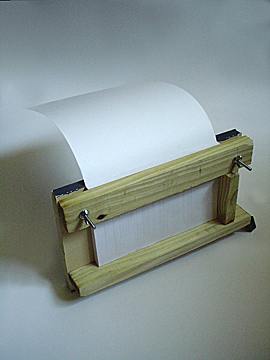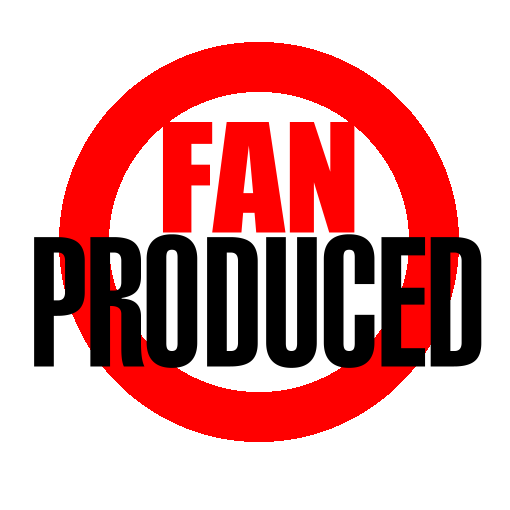Lack of originality is another defect that is pinned on fan productions and I will go so far as to say that breathing originality into *any* derivative work, irrespective of whether it is fan-made or professional, is one of the many major challenges a writer and producer is faced with.
As regards the originality of fan productions, I don't believe you can just throw out a blanket generalisation over them all because some are more susceptible than others.
As I've said before, your base level fan fiction author couldn't give a Tinker's what you think of their work because they are doing it for their own satisfaction and although they will be pleased if you complement their work, they aren't really interested in your critique because they didn't write it to exercise their art and are not interested in trying to improve. I'll not condemn them because writing for any purpose can lead to bigger and better things and bring them closer to the realisation that there might be a bigger audience than one for their work and will some day start to listen to critique which will lead them onto the path towards learning how to express themselves better.
You might have noticed that I have made the distinction between fan productions that use Canon characters and those that use OC's or Original Characters? This is no idle speculation, it is at the same time one of the things that frees us and a responsibility that binds us.
I very seldom do anything with canon characters because to write something that develops our appreciation of them is hard, *very* hard. I do however use canon races, settings, technology, backgrounds, etc so I'll stand up and be counted on that part. Have I used them with originality? That's for the audience to say, I suppose. I've had positive feedback, from die-hard fans as well as audio buffs, I am only one part of the small cast and crew who made it what it is but in general I think of it is something I'm proud to be associated with.
Star Trek Excelsior, Outpost, Eras, Henglaar MD - there is quite a healthy list of Star Trek fan audio dramas thank you very much - are examples of fan productions that use OC's and yet the canon details that they are built on are meticulously checked to make sure that they conform with the ideas of the original writers. The Klingons are honourable and warlike, the Vulcans are logical and unemotional, the Feddies are driven by an ethical code of conduct whilst playing the wildcard of humanity.
The Star Trek universe was created by professional writers, actors, designers and producers using an investment of hard cash from the entertainment industry which means that, no matter how loosely your production is based on the copyrighted work, it is still a fan production and as such must be bound by the fan production rules of engagement - no diverting revenue, all credit acknowledged...
How much harder is it to reconcile making a derivative work using canon characters? To my mind that is an immense task and, if done well, adds immensely to the franchise - done poorly, it can ring its death knell!
I'll admit to being a Batman fan. The tortured, brooding character is iconic. I was entertained but only occasionally impressed by the early movies, I was stunned by the Batman Begins reboot, I've listened to some of the OTR classics and I've heard promo excerpts from Dirk Mag's Knightfall which one of these days I've got to buy a copy of. I enjoyed Pete Milan & Seth Adam Sher's Ace of Detectives (a finalist for a 2007 Parsec Award) and I absolutely loved Laura Post's Batman: No Man's Land, which has been sadly in abeyance for two years.
Why did the early movies fail to convey the essence of the Dark Knight when the fan productions did? Because the studio played it for kitsch, they thought the public wanted an entertaining Batman and so they gave them a Batman (Val Kilmer) who actually smiled once! It was only with Batman Begins that they actually started to show the character the respect it deserved and were rewarded by critical acclaim.
Therein lies the crux of creating something based on an earlier work, especially something that was successful or has a strong fan following - you have to find the essence of the character/s and create something that respects that core and develops on it.
This is the usual failure of baseline fan fiction because a fan will generally want to write something that shows a character as they would like them to be and in so doing flies in the face of canon. Spock loves Kirk, the Emperor Palpatine cries, Dante from Devil May Cry becomes a Pokemon trainer! Yes, it has all happened in the fertile mind of a fan but is it Trek / Wars / DMC? Hey, I believe in IDIC so do whatever turns you on baby, just don't expect me to include it with fan productions that attempt to address their canon with some degree of accuracy. In the over-the-top world of Star Wars, the Emperor Palpatine, certainly in ep's 1-3, is as caring-and-sharing as Atilla the Hun! Works that make no attempt to rationalise these changes of character are called character rape by the unkind and I find them hard to defend.
The three times I can remember writing something using Trek canon characters I have tried to write about them based on my understanding of them from canon but taking it just a little further. I would no more have one of the canon characters I have gained so much enjoyment from do something out of character than I would write a lie about a real person.
So does that mean we need to regurgitate carbon copies of canon episodes? That would indeed be unoriginal but using canon characters to say something new? Why is Nechayev such a hard case? What would it have been like at the Court of Inquiry into the loss of the Enterprise-D at Veridian 3? What would happen if...? What happened next? Why didn't they...? What are the consequences of...?
Hard to do in Star Trek but even harder in any franchise that depends on the characters for its driving force: Buffy is a perfect example because without those central characters Sunnydale is just the same as any other Hellmount!
I suppose my point is that originality of premise, whilst creatively admirable, is not an automatic ticket to greatness just as it should not be assumed that it is impossible for a derivative work to be original. I've listened to some Indie audio dramas that have laboured valiantly to create an interesting, original fictional setting for their work and just not made it, whilst I've also heard some fan shows that either re-captured the original nicely or took them in new directions... and vice versa!
Whilst I will admit to open admiration of anyone who creates an interesting original fictional setting are we saying here that anyone's work which is based on another's fictional setting is to be automatically castigated? Dirk Maggs' Batman? Joss Whedon's Avengers? Joss is not averse to wanting to place his own personal stamp on franchises that he admires and I dare say the suits at DC are collectively kicking themselves for not letting him have his way with Wonder Woman... creatively speaking of course!
Talk to me of originality and, I will turn on you with rage. I am a crowd, I am a lonely man, I am nothing














